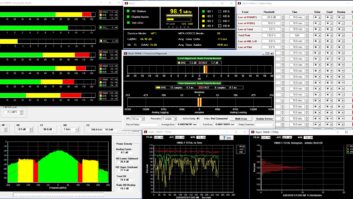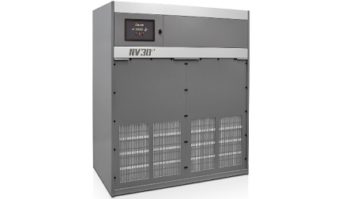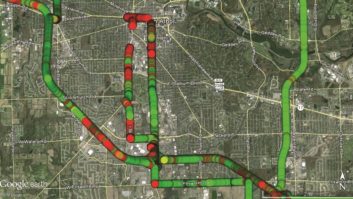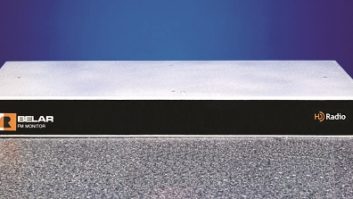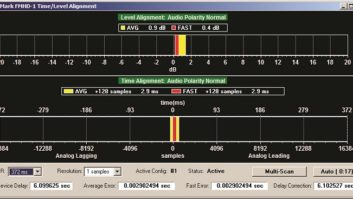Cox Media Group was an early adopter of HD Radio; we first went on the air with HD in 2005. At the beginning HD Radio installation was fairly simple, regardless of your transmission system, hi, mid, low or space combining � you had an HD exciter feeding a transmitter and time alignment was fairly simple.
As things became more complicated with multiple HD channels and the addition of importers and exporters, installation methods began to vary. With varying types of connections between importer, exporter and the Exciter Exgine things became more complicated and timing started to drift. Listener complaints forced the industry to take action. Some local radio dealers actually stopped selling HD Radios because buyers returned �broken� radios due to time alignment issues.
From the earliest days when you listened to FM with one ear and HD with the other, to newer equipment that measured the difference between the two, the time adjustment was always manual. With six HD stations, keeping things aligned can take a good chunk of time out of your day.
The FMHD1 front panel display Several years ago, we purchased a Belar FMHD1 and installed it at the studio with an outdoor antenna. This allowed us to monitor all six of our HD stations. The FMHD1 has real-time measurement of over-the-air analog versus HD Radio time alignment. This provides a tremendous improvement from earlier equipment that required you to measure, then align, then measure again, etc.

Using IP we are able to connect to the web GUI from the transmitter. This allowed precise adjustment of time delay at the transmitter, or using VPN anywhere else. But still the adjustment was manual.
When Belar announced new firmware for the FMHD1 that would automatically measure and adjust time alignment, we jumped at the chance to check it out.
Since we already owned an FMHD1 it was a simple matter of updating the firmware on the unit. It will now automatically measure and adjust up to six stations.
We use the time delay in our audio processors to delay the FM signal. All processing is done at the transmitter; we use a combination of Orban 8500HD, 8600HD and Omnia.11 processors. We have had no problems interfacing with any of these processors. The FMHD1 will also interface from most current processors from most major manufacturers and most exporters, if you do your time alignment there.
CONFIGURATION
Setup is fairly simple. All processors or exporters you wish to automatically adjust must be available via IP and you will need to know the amount of delay dialed in to each processor.
Then, using either the front panel or the web GUI on the FMHD1 (I have found the web GUI to be easier), you enter the frequency of each station you want to check and how long you want it to monitor that station before moving on to the next. I have found that five minutes per station works well � less time than that often does not give the FMHD1 enough time to analyze and adjust the station.
Next, go to the �configure� tab for each frequency, where you will enter the IP address of the processor or exporter for that station, user name and password for that processor and how often you want to update the processor delay. I found one minute works well. Enter the amount of delay currently in the processor. This sets the center of the alignment window. Then go to scan and enter �enable.�
The FMHD1 will start at the first station, measure time alignment, connect to the processor via IP, then send a correction value to the processor at the interval you entered. In my case it spends five minutes on each station and sends a correction value to the processor every one minute. At the end of the five minutes, it moves on to the next station and repeats the process. We leave our unit on, and it continually corrects 24/7.
You can monitor the status of auto correction either on the front panel display or via the web GUI. On that display you will have the bar graph showing audio level difference and time difference for both �average� and �fast� measurements. Time difference is shown in both the number of samples and in milliseconds. After connecting to the appropriate processor it will also show the current amount of delay within the processor and the new value that will be entered at the next correction interval. You will also find the time remaining to the next correction and the time remaining before it switches to the next station. If you are only correcting one station, it will remain on that station and continually correct audio delay.
Some things the FMHD1 will not do � for example, it will not adjust audio levels. It will tell you the difference in audio levels, but that�s all. The display will show you audio difference of up to 20db, but does not specify which is louder, FM or HD. By trial and error I determined that the level shown is for the HD, so adjusting audio to the minus side will reduce the audio on the HD. I have also found that if you adjust audio to 0db difference, the HD audio will be louder than the FM. We have found that setting audio to -2 to -3db gives the smoothest blend between FM and HD.
It will also not adjust phase; it will tell you if your HD and FM are in phase, but you have to make the adjustment in your equipment yourself.
One minor inconvenience in the display is that it only tells you the average delay error. The web GUI shows both fast and average delay error and it would be nice if that were available on the front panel as well.
Aside from the minor glitches I described, it�s a great unit. It�s been keeping our six FMs in time alignment for several months now. It�s nice not to have to check the time alignment every day and know that it�s correct.
